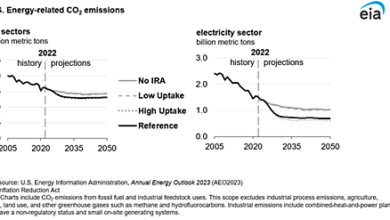Designing a BRAC‐Like Fiscal Commission To Stabilize the Debt

A new CBO (Congressional Budget Office) report and a Treasury letter by Secretary Janet Yellen now estimate the debt ceiling may bind as soon as June 1st. Following this announcement of a crunched timeline, President Biden invited congressional leaders to a meeting at the White House on May 9th.
As Congress and the Biden administration grapple with how to raise the federal debt ceiling in the next few weeks, they should work together on a fiscal plan to stabilize the growth in the federal debt. One part of such a plan could be the creation of a Base Realignment and Closure (BRAC)-like fiscal commission. The 64‐member Problem Solvers Caucus, co‐chaired by Rep. Brian Fitzpatrick (R‑PA) and Rep. Josh Gottheimer (D‑NJ), recently proposed a commission as part of their debt ceiling framework, recommending:
“…a BRAC‐like external Fiscal Commission to review and recommend a package to stabilize long‐term deficits and debt.”
Commissions have been used in the United States and in many other OECD countries to develop large‐scale fiscal reforms because they can elevate the public discourse by taking divisive and controversial issues out of the direct political process. Importantly, they build a firewall to shield policymakers from political risks inherent in supporting fiscal reforms that will inevitably result in winners and losers. This allows policymakers to better evaluate the reforms based on their merits and to focus less on the political ramifications. Examples of successful commissions include the U.S. Greenspan Commission (1981), the U.S. Defense Base Closure and Realignment Commission (BRAC) (1988), the Swedish Pension Commission (1984), the Dutch Donner Commission (2001), and the German Rurup Commission (2002).
Many commentators were quick to brush off a fiscal commission as a fig leaf proposal. It’s understandable that some have grown cynical following the failure of several earlier congressional commissions, including the 2010 Simpson Bowles Commission and the Budget Control Act’s supercommittee. It matters greatly who makes up the commission’s membership and how recommendations will be adopted for the success prospects of such a plan. Congress can learn valuable lessons from the BRAC process for getting these details right.
The BRAC process was first used by the Department of Defense in the late 1980s to address inefficiencies and redundancies within the military base structure. The process involved an independent commission that evaluated military installations and recommended closures and realignments based on a set of criteria. The Secretary of Defense and the President would then review the recommendations before the President sent them to Congress. The BRAC commission’s recommendations would take effect automatically unless both the House and Senate passed a joint resolution disapproving them within a specified period. BRAC was a successful process that resulted in significant savings for the federal government while enabling the military to focus on key priorities.
The BRAC process was necessary because base closures resulted in concentrated benefits and dispersed costs, as districts in which bases were closed experienced mostly temporary disruptions while the benefits of reduced costs were shared among all taxpayers. Despite bipartisan interest in base closures, it became increasingly difficult to carry them out as Members of Congress sought to protect each other’s districts from being affected. An independent commission to close and realign defense bases without Congress having to actively vote for closing bases in their districts broke through the gridlock. A well‐designed BRAC‐like fiscal commission is a promising proposal to help elected officials overcome similar political gridlock in pursuit of better fiscal management and debt control. Congress should consider the following design features when setting up a fiscal commission:
Independent Experts. The commission should be composed of independent experts in economics and public finance, including those with expertise in retirement security and health care policy. Congress might also consider including independent commissioners of different generations to give voice to the concerns of Americans of different ages and how they will be affected by programmatic changes.
Concrete Goals. The commission would be tasked with reviewing all major aspects of government spending, including entitlements, discretionary spending, and tax expenditures, and recommending changes to stabilize the growth in the debt at no more than 100 percent of GDP for the next 10 to 30 years. The commission could consider the effectiveness and efficiency of government programs and agencies and recommend changes to reduce costs or eliminations if programs are duplicative or no longer serving as intended.
Certified Results. The Congressional Budget Office (CBO) or the Government Accountability Office (GAO) should certify that the commission’s recommendations would achieve debt stabilization over the short and medium term. This added layer of oversight and accountability would ensure that the recommendations were based on sound economic and fiscal analysis.
Fast‐Track Authority. The President would review the commission’s recommendations and either approve or reject them. If the President rejected the recommendations, the President should detail their objections to allow the commission to revise their recommendations. If the President approved the recommendations, they would be sent to Congress as one holistic package, without allowing for congressional amendments.
Silent Approval. The commission’s recommendations would become law within 45 days unless Congress, both the House and Senate, passed a joint resolution disapproving of the reform package.
The fast‐track authority granted to the original BRAC commission was initially controversial, with some members of Congress expressing concerns about potential violations of their Article I powers. The changes made to the BRAC process in response would also apply to this fiscal commission, including certification by a nonpartisan body that the recommendations were sound and allowing Congress sufficient time to evaluate recommendations and seek input from affected communities before changes would go into effect.
Given the powers a BRAC‐like fiscal commission would have, it’s important to ensure oversight and accountability. Other ways of enhancing congressional oversight might include requiring that the commission publish meeting agendas and minutes, provide public access to documents and data informing the commission’s work, and hold public hearings and community forums to gather input from the public. Congress could also require the commission to publish periodic reports on its findings and deliberations. Lastly, Congress might require that the heads of affected executive departments certify commission proposals as sound before they’re sent to the President for approval. A well‐designed BRAC‐like process will be an effective tool for reducing government spending while also respecting Congress’s constitutional authority.
As federal debt is projected to rise to new record highs—exceeding levels last seen since World War II—the responsible choice at the debt limit is for Congress and the executive to reduce government deficit spending and slow the growth in the debt. Stabilizing the debt would require at least $8 trillion in deficit reduction or reducing projected spending by 10 percent over the next 10 years. Congress could stabilize the debt through a combination of new limits on discretionary spending, immediate reductions to mandatory programs, and future savings from reforms to major entitlement programs and other changes put forth by a BRAC‐like fiscal commission.
For such a commission to have the greatest chance of succeeding, it should be independent, given clear criteria for carrying out its mission, subject to review by a nonpartisan government body to certify its recommendations are sound, and propelled forward by executive fast‐track authority and congressional silent approval.





